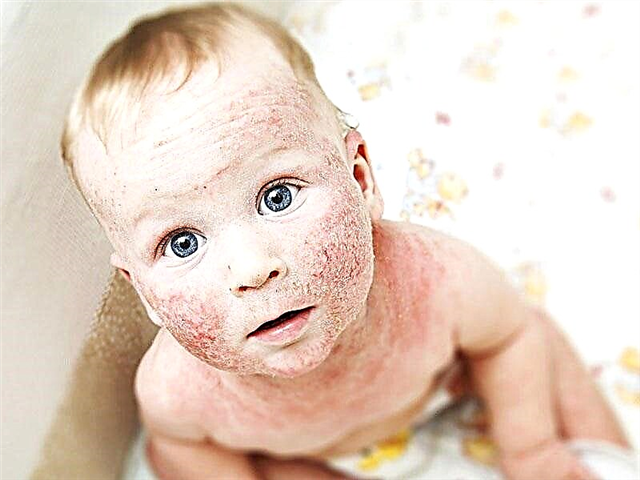Genetic abnormalities in the development of the child entail strong mutations. Such deviations shock parents and force them to think about what went wrong. We will talk about one of such deviations: its etiology, epidemiology, signs and diagnosis.
Patau syndrome (trisomy 13) is a genetic defect associated with chromosome 13. Most people have 23 pairs of chromosomes. But individuals with this syndrome have an extra copy of chromosome 13. Trisomy 13 is a serious genetic disorder, so most babies die before birth or in the first week of life.
Types of trisomy of the 13th chromosome
In modern science, 3 types of trisomy 13 are described:
- Complete trisomy accounts for most cases of the syndrome. Every cell in the body contains 3 copies of chromosome 13.
- Partial trisomy. These patients do not have an extra copy of chromosome 13. Rather, they have an extra chromosome attached to another chromosome in their cells.
- Mosaic trisomy. Patients have an extra copy of chromosome 13, but only in certain cells of the body.

Reasons for the development of Patau syndrome
Trisomy 13 is usually caused by an abnormality in cell division.
Usually, trisomy 13 is not inherited and is the result of random events in the formation of eggs and sperm in healthy parents. An error in cell division leads to an abnormal number of chromosomes in the egg or sperm. If one of them contributes to the genotype of the child, he will have an extra chromosome 13 in every cell of the body.
For a woman who has never had a pregnancy or a child with a chromosomal abnormality, the risk of developing a fetus with trisomy 13 increases with the age of the mother. For a woman who has had a previous pregnancy affected by this anomaly, or has had a child with the syndrome, the risk of recurrence is usually 1%.
On the other hand, partial trisomy 13 can be inherited. An unaffected parent may have a rearrangement of genetic material between chromosome 13 and another chromosome. These rearrangements are called balanced translocations because there is no extra or missing genetic material from chromosome 13. A person with a balanced translocation involving chromosome 13 has an increased chance of passing on extra material from it to their children.

People interested in learning about their personal risk of having a baby with a chromosomal abnormality should talk to their doctor or geneticist. This will help parents:
- analyze in detail the results of chromosome tests;
- identify diagnostic options for future pregnancy.
Epidemiology of trisomy of the 13th chromosome
Patau syndrome is not very common; only 1 in 16,000 children have the disorder. 95% of children with trisomy 13 die before birth.
The average survival age for such children is 2.5 days, only 1 in 20 babies survive for more than six months. Some children grow into adolescence and seem to be doing better than one would expect based on reports from those who die in the perinatal period. A multilevel study found that the 5-year survival rate for trisomy 13 is 9.7%, with the lowest mortality rates among girls. Reports of adults with Patau syndrome are rare.
How does Patau syndrome manifest?
Because the extra chromosome is present throughout the body, trisomy 13 can cause problems in many body systems.
Some of the symptoms of the syndrome can be treated with medication or surgery, but others cannot be treated. Signs include:
- Premature birth: Many pregnancies in which the fetus has trisomy 13 end in miscarriage or stillbirth. Babies who are born alive are usually born early, with an average gestation of 29 weeks. These children have to deal with many of the complications and symptoms of trisomy 13.
- Facial Disorders: Many babies with trisomy 13 are born with a cleft lip and / or palate. The eyes are located close to each other and can be connected to form one eye. The ears may be low, and aplasia of the scalp (lack of skin) is common.
- Heart disorders. Holes between cardiac chambers (ventricular and interatrial septal defect) and patent ductus arteriosus may be found.
- Brain problems: In some children with trisomy 13, the front is not divided properly. This accounts for many of the face's problems associated with the disorder. Children with Patau syndrome have severe mental disabilities and may have seizures.
- Gastrointestinal problems in children with trisomy 13 include umbilical and inguinal hernias.
- Skeletal problems: Children with the syndrome may have extra toes, clenched hands, or misshapen legs.
- Breathing problems: possible difficulty breathing. There are also times when babies stop breathing (apnea).

Diagnostics
Prenatal Screening for Patau Syndrome
During the first trimester, your doctor will do routine screening tests such as ultrasound and maternal blood tests. The results of these tests will provide the specialist with information about how your child is growing and developing. For example, during an ultrasound scan, the doctor may notice abnormalities in the child's physical appearance, which may indicate trisomy 13.
If the specialist believes that the fetus may have a chromosomal disorder, he may suggest that the mother have a non-invasive prenatal genetic screening test. This test will provide the doctor with information about the risk of the fetus having trisomy 13 or another chromosomal abnormality. If the results of this screening test show a high risk, the pregnant woman will be asked for diagnostic testing.
Prenatal diagnostic testing for Patau syndrome
Prenatal diagnostic tests will provide the specialist with a definitive answer as to whether a child has a specific chromosomal abnormality. Prenatal diagnostic testing options for Patau syndrome include procedures:
- Examination of the chorionic villi. The examination is usually done between 10 and 13 weeks of gestation. This procedure involves taking a sample of the placental chorionic villi using a needle through the abdomen or cervix.
- Amniocentesis is another test that is done after 15 gestational weeks. This procedure involves taking a sample of amniotic fluid by inserting a needle through the abdomen guided by ultrasound imaging.
Chromosomes in samples collected from both diagnostic tests are analyzed to detect chromosomal abnormalities in the growing fetus.
Prenatal screening and diagnostic testing are optional. If you decide not to be tested and your baby shows signs of a chromosomal abnormality during childbirth, a specialist will perform a blood test on the newborn to determine the diagnosis.

Treatment of children with Patau syndrome, is it possible?
There is no standard treatment for babies born with Patau syndrome. Instead, it specializes and focuses on the symptoms of each individual patient.
Some parents choose to terminate a pregnancy if the fetus is diagnosed with trisomy 13 due to an overall poor prognosis and a desire not to prolong the grief of loss. Others choose to stay pregnant because of anti-abortion beliefs or because they want to spend some time with the baby, even if it is short.
The same goes for infants who are diagnosed after birth - some parents choose only care services, while others favor intensive medical intervention, even if the chances are slim that the baby will survive to infancy.
Although trisomy 13 is considered a fatal disorder that is incompatible with life, modern medicine has increased the length and quality of life for some children with Patau syndrome. Depending on the severity of other symptoms, surgery may help correct heart or GI defects or repair cleavage. Appropriate medical treatment has helped many children with trisomy 13.
Almost all children who survived the first year will have developmental and growth retardation. Early intervention programs and special education are very important for the relatively small number of children with the syndrome who survive the difficult early months.

Conclusion
If your child has been diagnosed with Patau Syndrome, you can experience any number of emotions, from grief to anger and numbness. You should take your time and think about the situation before moving forward and making decisions or making plans. There is no “right” course of action to take with these diagnoses. You have to do whatever you see fit, what you can best live with, and the answer is different for everyone.
Article rating:



